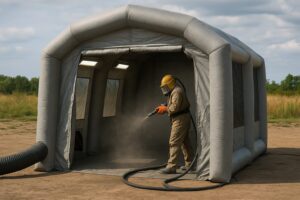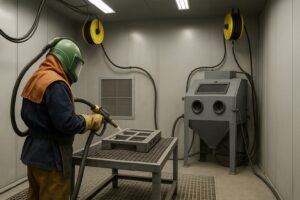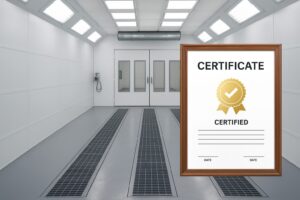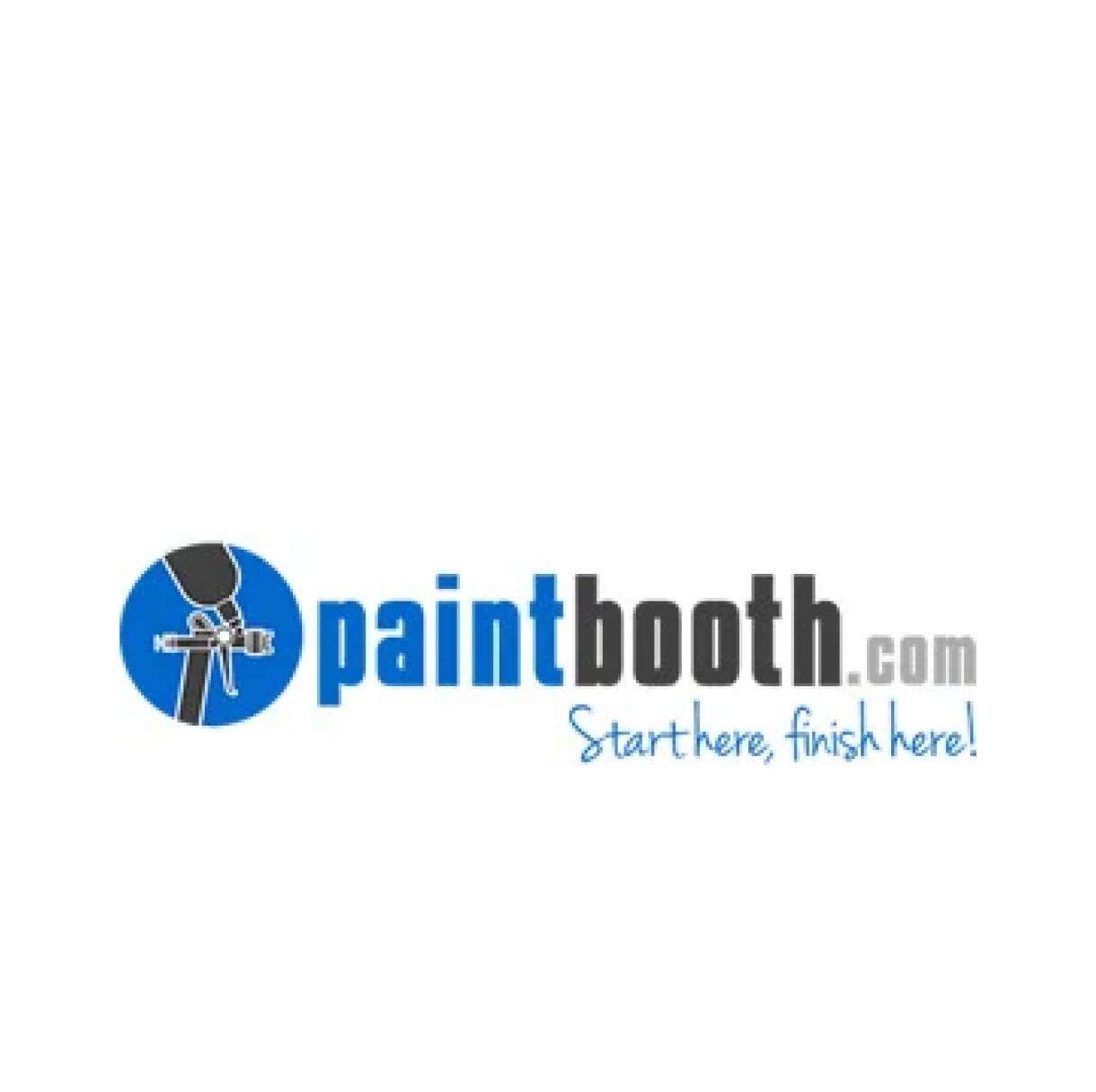When it comes to giving metal parts and tools a durable, eye-catching finish, powder coating has surged in popularity. Unlike liquid paint, powder coating uses finely ground particles that melt and fuse to surfaces, creating a hard shell that resists chips, scratches, and fading. If you already own or operate a paint booth for conventional wet spraying. In many cases, the answer is yes. With the right adjustments, a standard paint booth can double as a powder coating station, delivering professional results without the need to invest in an entirely separate system.
What Is Powder Coating?
Powder coating is a dry finishing process. Instead of spraying liquid paint, an electrostatic gun charges dry powder particles as they’re directed toward a grounded metal object. The charged particles stick evenly, covering every nook and cranny. After spraying, the coated piece goes into an oven, where heat melts the powder into a continuous film.
This technique offers several advantages over liquid paint:
Durability: Powder coats form a thicker, tougher layer that resists impact and abrasion.
- Uniform Coverage: Electrostatic attraction helps the powder reach recessed areas that liquid paint might miss.
- Eco-Friendly: Overspray powder can often be reclaimed and reused, and the process emits virtually no volatile organic compounds (VOCs).
Knowing these basics helps us see why adapting a paint booth for powder coating makes sense, both processes share similar spraying and containment needs.
Adapting a Paint Booth for Powder Coating
A conventional paint booth is designed to control overspray, capture fumes, and provide a clean environment for wet finishes. To use it for powder coating, you’ll need to make a few key modifications:
Airflow and Filtration
Powder particles are heavier than liquid paint droplets. While a wet-spray booth draws air downward or across the operator, a powder booth often uses reversed airflow, pulling air from the ceiling down through filters behind the operator. To adapt, consider installing high-efficiency particulate filters (HEPA-grade) designed to trap fine powder. You may also need to adjust fan speeds to maintain consistent airflow without stirring up settled powder.
Booth Interior Surfaces
Dry powder can accumulate on walls and ledges, creating potential contamination for future coatings. Smooth, non-porous booth walls help powder slide down into collection areas. If your booth has perforated or porous panels, replace them with smooth metal surfaces or cover them with disposable liners that can be replaced between jobs.
Grounding and Electrical Safety
Because powder coating relies on electrostatic attraction, everything inside the booth, hooks, racks, and work tables must be properly grounded. Check that your booth’s floor and fixtures carry a reliable ground path. Additionally, ensure all electrical components meet local codes for preventing static buildup and sparks, since fine powder can pose a fire hazard in confined spaces.
Curing Oven Access
After spraying, powder-coated parts must cure at high temperatures (typically 350–400°F) in an oven. If your facility’s layout places the booth far from an oven, plan for safe, powder-protected transport of coated parts. Some shops install small, dedicated curing ovens adjacent to their booths, complete with insulated transfer windows. With these adjustments in place, your booth can handle dry powder as effectively as liquid paint.
Benefits of Powder Coating in Your Paint Booth
Leveraging an existing paint booth for powder coating delivers a range of benefits:
Cost Savings
Purchasing a separate powder booth can mean tens of thousands of dollars in extra equipment. By retrofitting your current booth, upgrading filters, grounding fixtures, and maybe tweaking airflow, you save significant capital while expanding your service offerings.
Space Efficiency
Floor space is at a premium in most shops. Rather than carving out room for a second booth, you use the same footprint for both wet and dry finishes. This flexibility suits operations with varied workloads or seasonal demand shifts.
Workflow Streamlining
Technicians can switch between liquid and powder jobs in the same workspace. With clear procedures for booth cleaning and filter changes, you minimize downtime and maximize throughput.
Broader Service Range
Offering both wet-spray paint and powder coating attracts a wider range of clients. Some clients prefer powder’s durability for outdoor or industrial gear, while others need the finish options and thinner coats that liquid paint provides. Equipped for both, your shop meets diverse needs under one roof.
Best Practices for Powder Coating in a Paint Booth
Even with retrofits complete, discipline and good habits ensure top-quality results:
Thorough Booth Cleaning
Before switching from paint to powder (or vice versa), clean booth walls, floors, and filters. A vacuum outfitted with a HEPA filter works best to remove loose powder without blowing it back into the air.
Dedicated Cables and Hooks
Use separate racks, hooks, and grounding cables for powder jobs. Label them clearly so you don’t accidentally hang a wet-spray part on powder-coating gear, which would ruin both jobs.
Routine Maintenance
Inspect filters weekly and replace them whenever they show significant buildup. Check grounding straps and hose connections for wear. Confirm that the booth’s fan and motor operate smoothly without excess vibration.
Operator Training
Powder coating is more sensitive to humidity and part cleanliness than liquid paint. Train staff on proper surface prep, ideal temperature ranges for storage, and safe handling of powder materials. Emphasize that even a tiny oil spot or fingerprint on metal can cause a coating defect.
Quality Control Checks
After curing, examine each piece for uniform gloss, color consistency, and full coverage. Measure film thickness in critical areas to confirm it meets specifications—usually between 1.5 and 3.0 mils for general industrial parts.
Conclusion
A standard paint booth can be adapted for powder coating, bridging the gap between wet and dry finishing without requiring a second, dedicated booth. By upgrading filters, grounding your equipment, and following strict cleaning and maintenance routines, you’ll harness powder coating’s durability and eco-friendly advantages right in your existing spray booth. The payoff is clear: lower costs, efficient use of space, faster job turnover, and an expanded suite of finishing services that keep customers coming back for both paint and powder. Whether you’re a small custom shop or a larger production house, retrofitting your paint booth for powder coating is a savvy move toward higher profits and a stronger competitive edge.
How We Can Help with Your Paint Booth Needs
At Paint Booth, we specialize in providing top-tier paint booths and finishing equipment tailored to your business requirements. Whether you need a standard-size paint booth or a custom solution designed for your unique projects, our expert team is here to assist you every step of the way. From design to installation, we ensure that your equipment meets the highest industry standards, enhancing both your productivity and the quality of your finishes. Contact us today to find the perfect paint booth solution for your business!




